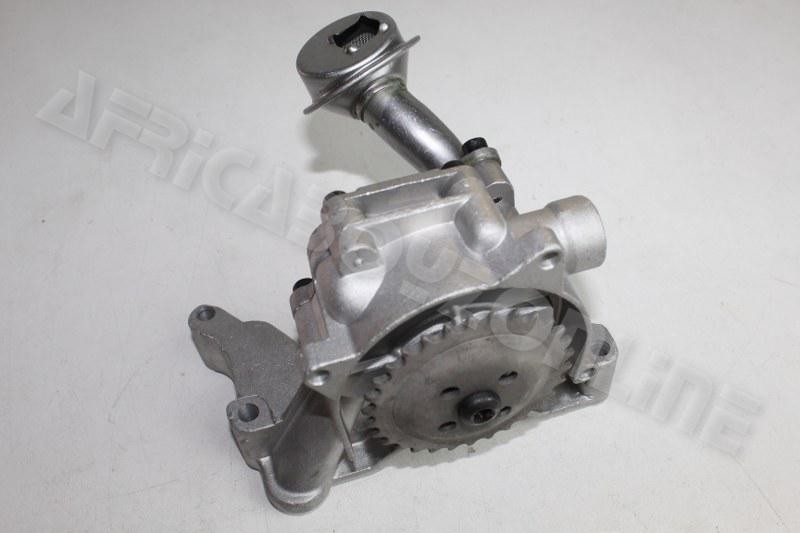Maintain consistent power with a high-performance clp engine.
Maintain consistent power with a high-performance clp engine.
Blog Article
Just How a Clp Engine Can Enhance Performance in Different Industries
The development of CLP engines notes a significant shift in functional performance throughout various markets, driven by their capacity to optimize fuel usage and lessen downtime. As companies significantly focus on sustainability alongside effectiveness, the duty of CLP engines comes to be also more crucial.
Introduction of CLP Engines
CLP engines, or Constant Liquid Propellant engines, represent a substantial development in propulsion innovation, particularly for space applications. These engines make use of a constant feed system that permits the sustained expulsion of propellant, bring about improved performance and efficiency contrasted to typical strong or hybrid propulsion systems. By keeping a constant circulation of liquid propellant, CLP engines can attain much more exact drive control, which is important for navigating spacecraft in numerous objective situations.
The design of CLP engines incorporates sophisticated materials and cutting-edge fuel monitoring systems. clp engine. This leads to reduced weight and boosted dependability, vital factors for long-duration room missions. The constant procedure reduces the threat of combustion instability, a typical challenge in traditional rocket engines.

Benefits in Production
The production of Constant Liquid Propellant (CLP) engines offers several significant benefits that boost both performance and cost-effectiveness. Among the main benefits is the streamlined production process, which lowers the intricacy related to typical propulsion systems. By utilizing liquid propellant, suppliers can accomplish better precision in engine performance, causing enhanced energy output and reduced waste.
In addition, CLP engines assist in a higher degree of modularity, permitting for easier assimilation right into numerous manufacturing lines. This adaptability can considerably lower preparations and improve overall functional adaptability. Using CLP innovation additionally often tends to reduce the need for comprehensive upkeep due to fewer relocating parts, which converts into lowered downtime and functional costs.

Applications in Logistics
Leveraging Constant Liquid Propellant (CLP) engines in logistics provides considerable advantages in operational efficiency and dependability. These engines offer a robust service for various transportation needs, enabling the seamless activity of items throughout huge distances. The fundamental design of CLP engines permits consistent power output, which converts right into smoother and a lot more predictable transportation schedules.
One of the key applications of CLP engines in logistics remains in sturdy freight transport, where they can drive both ground and airborne lorries. Their capacity to preserve high performance under differing tons conditions ensures that delivery timelines are fulfilled, consequently improving customer satisfaction. In addition, CLP engines can be incorporated into automated logistics systems, facilitating real-time tracking and optimizing course preparation.
Moreover, the sturdiness of CLP engines decreases maintenance downtime, permitting logistics companies to maximize their operational abilities. This is particularly valuable in warehousing operations, where efficiency in managing and carrying items is important. As logistics continues to advance, the combination of CLP engines represents a forward-thinking approach that not only enhances performance however also supports the sector's growing needs for dependability and speed.
Effect On Energy Effectiveness
Just How do Constant Fluid Propellant (CLP) engines enhance energy performance in transportation? CLP engines use a regular circulation of liquid fuel, maximizing combustion processes and preserving a have a peek at this site secure thrust outcome. continue reading this This layout minimizes energy losses related to typical combustion engines, where fuel distribution can differ and lead to ineffectiveness.
The continual operation of CLP engines permits a much more reliable thermal cycle, leading to greater details impulse compared to conventional engines. clp engine. This equates to lowered gas consumption for the same amount of job done, dramatically decreasing operational prices throughout different transport fields, including aviation and maritime industries
Furthermore, the capability of CLP engines to preserve ideal efficiency under differing lots problems lowers the demand for constant velocity and slowdown, better boosting gas performance. Enhanced energy effectiveness not only adds to cost savings but also leads to decrease greenhouse gas exhausts, straightening with global sustainability goals.
Future Trends and Innovations
Arising innovations in Continual Fluid Propellant (CLP) engine innovation pledge to article transform the landscape of transportation efficiency and sustainability. As sectors pivot towards greener options, CLP engines stand at the leading edge, integrating innovative materials and layout methods that improve performance while minimizing ecological effect.
One of one of the most encouraging fads is the adoption of hybrid systems that incorporate CLP engines with renewable resource sources. This synergy can maximize fuel consumption and lower exhausts, straightening with worldwide sustainability objectives. Improvements in computational fluid characteristics (CFD) are facilitating the layout of more aerodynamically effective engines, leading to reduced drag and boosted fuel efficiency.
In addition, the advancement of clever monitoring systems is readied to enhance functional efficiencies. These systems take advantage of data analytics and IoT innovation to maximize engine performance in real-time, making certain that the engines operate within their most reliable parameters.
As research study remains to explore alternate propellant formulations-- such as biofuels and synthetic gas-- the future of CLP engines looks promising. By utilizing these technologies, sectors can not only enhance their performance but also add considerably to a cleaner, extra sustainable future in transportation.
Conclusion
In conclusion, CLP engines stand for a substantial innovation in performance throughout several markets. The combination of sophisticated materials and less moving parts minimizes upkeep needs, while positioning with sustainability goals positions CLP engines as a pivotal technology for the future.
Report this page